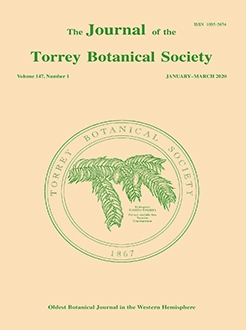Analysis of herbaria records allows for an examination of patterns of spatial spread of nonnative plants in novel ranges, aiding in understanding the processes that govern nonnative species invasions. I used herbaria records to investigate the rate of spread and pattern of establishment for the invasive plant Frangula alnus (Rhamnaceae) in northeastern and central North America. I collected records spanning a temporal range from ca. 1880 to the present and a spatial range covering the entire invaded area in northeast North America. To address unequal sampling effort in specimen collection, I compared temporal and spatial patterns of F. alnus accessions with patterns in a group of ecologically similar native species. Frangula alnus likely had multiple initial introductions into North America that were geographically separated, ranging from southern Ontario to the coastal Mid-Atlantic region. Trends in record collection in time and space show that the rate of spread of F. alnus was initially slow, then increased rapidly during the early 20th century, and reached a relatively constant rate of spread in the later 20th century. Examining the spread of this species at the continental scale, it appears to have experienced an extended lag phase early in its invasion history, but has steadily increased in area of occupancy since ca. 1920. This counters previous reports suggesting a lag lasting to ca. 1970. These results raise the question of whether extended lag phases may be a spatial-scale-specific pattern. The analytical methods presented here provide one way to investigate this question further.
BioOne.org will be down briefly for maintenance on 17 December 2024 between 18:00-22:00 Pacific Time US. We apologize for any inconvenience.
How to translate text using browser tools
18 March 2020
Observations of extended lag phase of nonnative invasive Frangula alnus (Rhamnaceae) may be spatial-scale dependent
Matthew E. Aiello-Lammens
ACCESS THE FULL ARTICLE
Frangula alnus
herbarium
lag phase
spatial spread
species invasion





